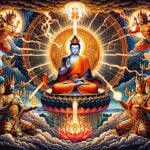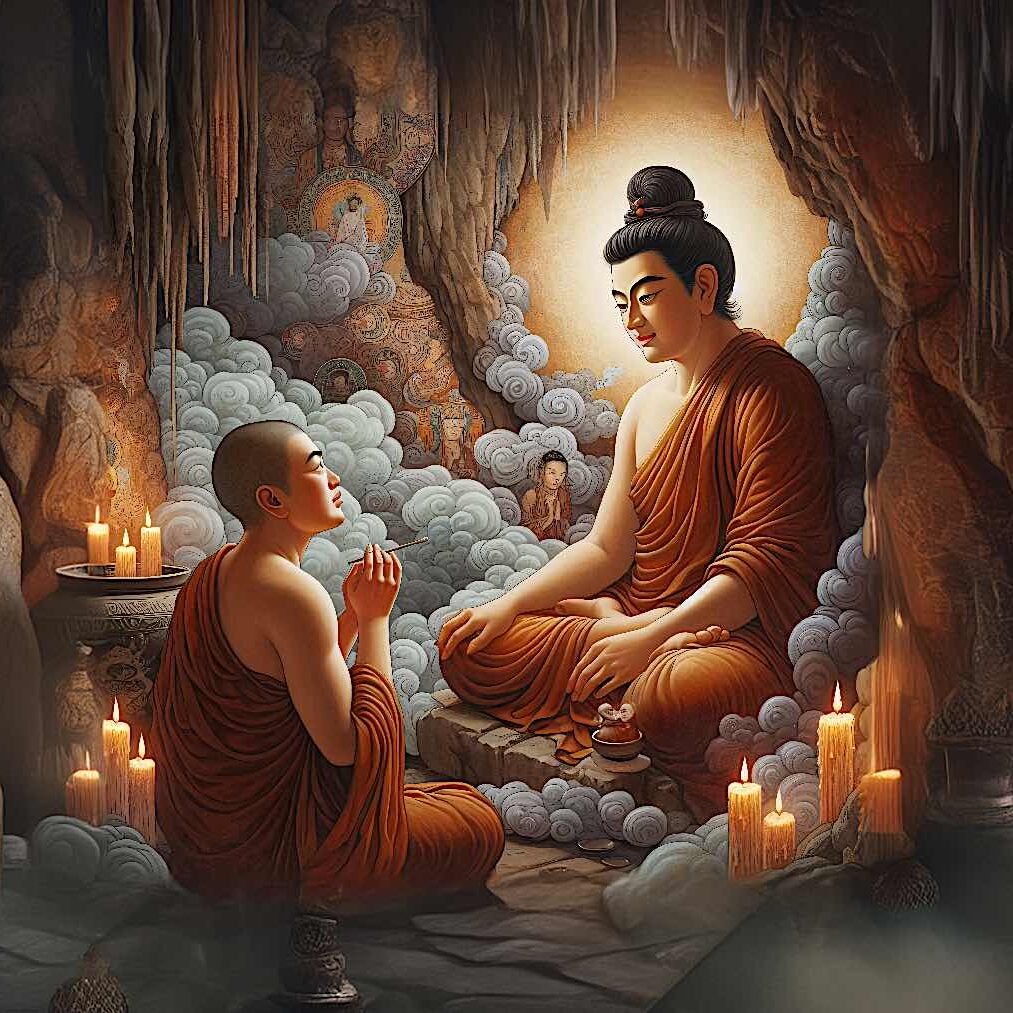HAPPY Theravada Buddhist New Year April 06 2023! (varies by region somewhat 13-16th) Songkram, a time for alms, practice, fesitvals, respect, and sandcastles
New years in Theravadan Buddhism is often called Maha Songkram (in Thailand), derived from the Sanskrit word, saṅkrānti (or, more specifically, meṣa saṅkrānti which means literally “astrological passage”). Maha Songkran means ‘great Songkran — since technically there is a Songkran every month.
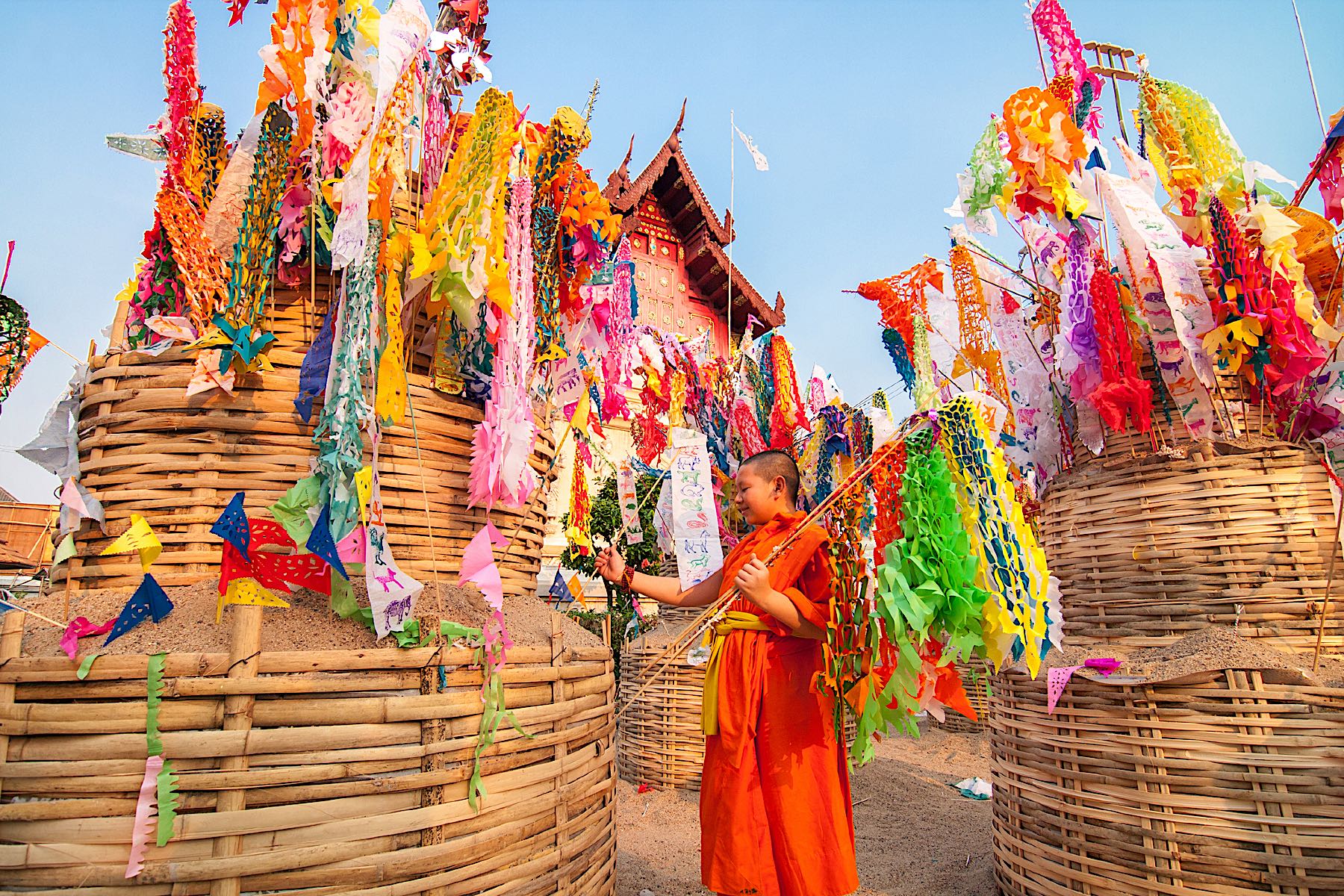
Theravadan New Year is celebrated all over South East Asian countries such as Sri Lanka, Cambodia, Laos, Burma, Thailand and India — is typically a three-day celebration beginning with a temple visit (usually) on April April 6 to 8 this year (2023). Songkran 2023 in Thailand began on Wednesday, April 6, and ends on Friday, April 8. It is also Nepali New Year April 6! Some celebrate on the weekend April 9-10. In many areas the three days are a holiday.
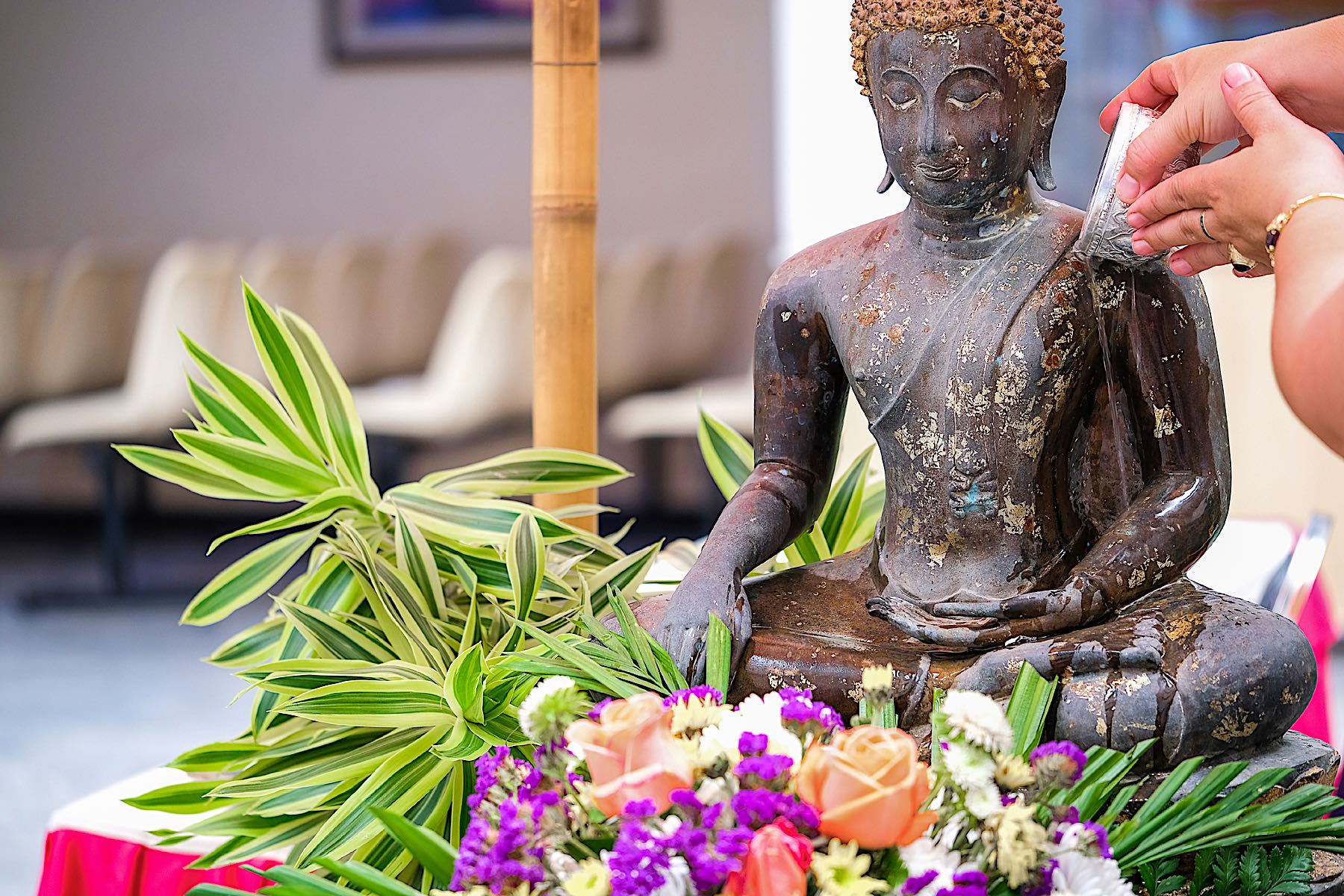
A time of celebration, resolutions, alms, respect and purification
This is a time of year when Buddhists reflect on the past year, make resolutions for the coming one, and perform special ceremonies. One important part of Theravada New Year is the water festival, in which people meet the Buddha image and pay respect to the elderly by watering their hands together. This ritual symbolizes purity and the washing away of bad karma. Meritorious activities, such as offering alms to the monastic community is also a wonderful activity for New Year:
Another popular activity during Theravada New Year is building sandcastles, which is said to bring good luck. The New Year is also a time for families and friends to get together and enjoy food, games, and conversation. In some countries, such as Sri Lanka, the lottery is also a big part of New Year’s festivities.
Whatever your tradition, we wish you a happy and peaceful Theravada Buddhist New Year!
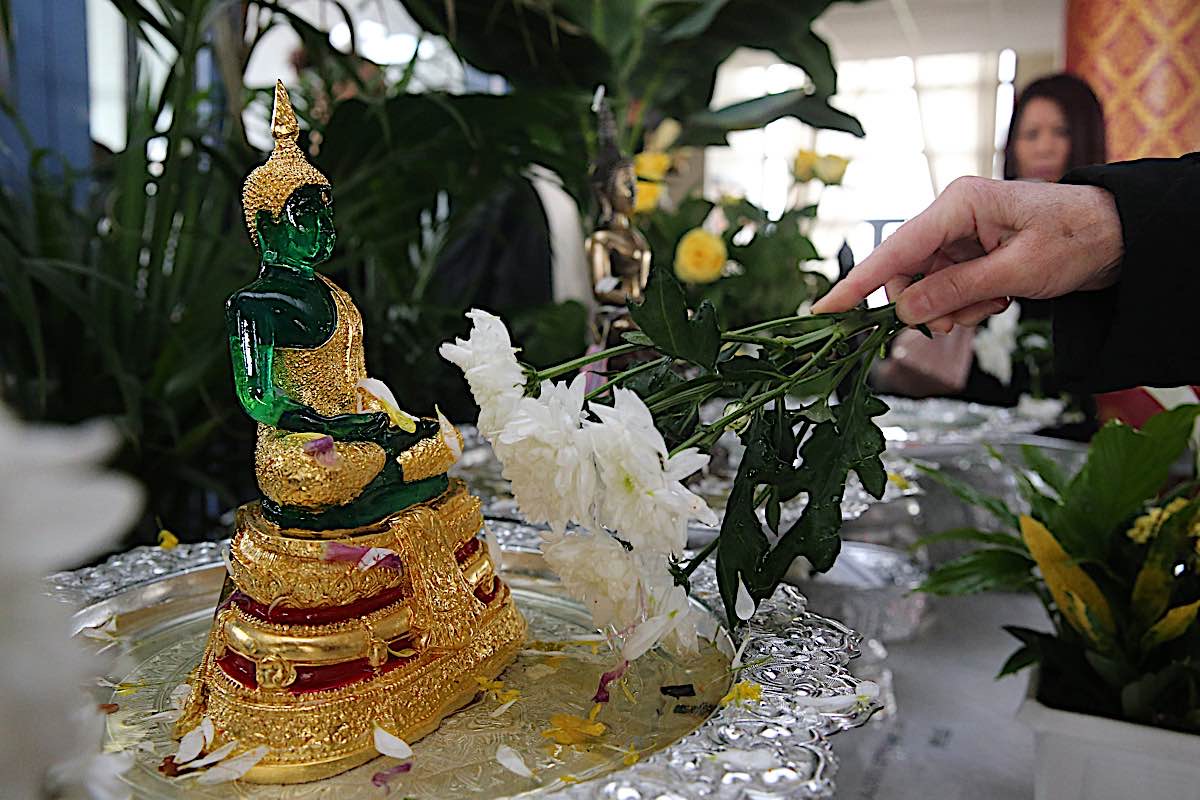
Activities typical for New Year
Theravada Buddhist New Year typically includes:
- New Year celebrations on and after April 16 2022
- Alms rounds: giving to the monastic community
- A temple visit
- Water festival
- Respect for the elderly
- Sandcastles
- Good luck activities
- Family and friends gathering
- Food and games
- Lotteries
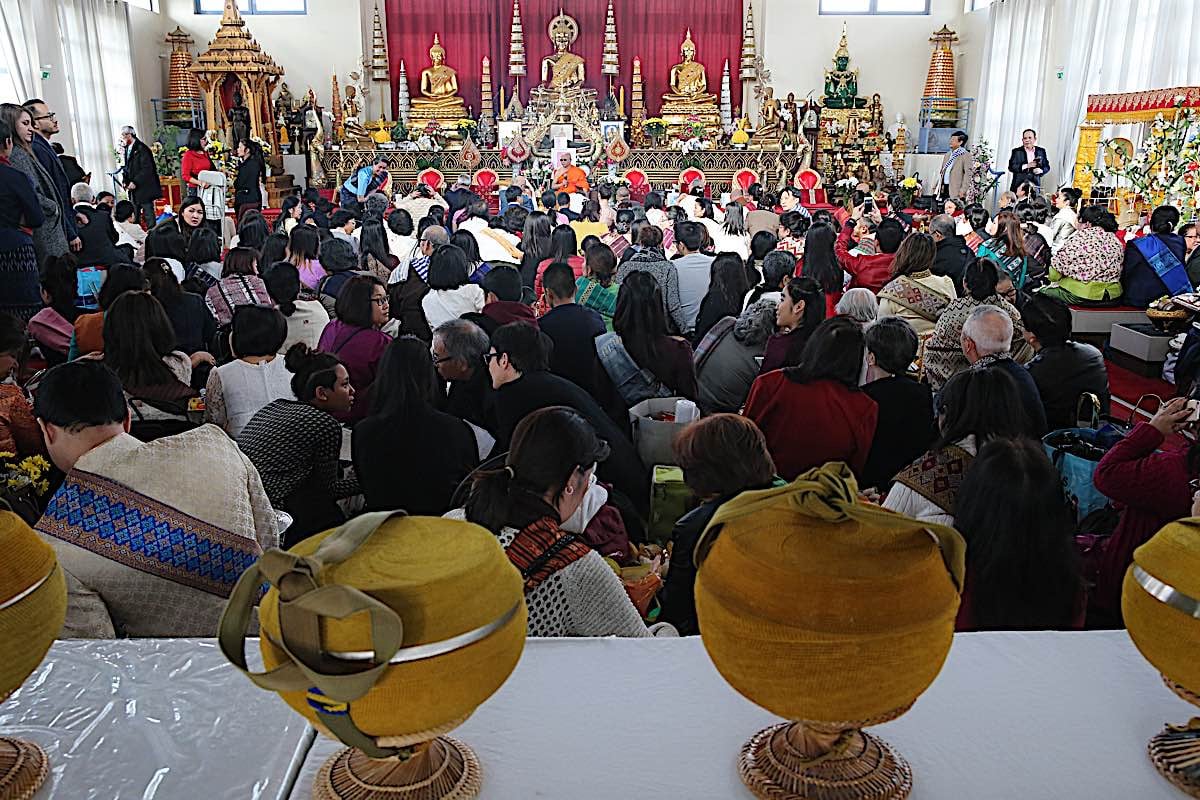
Captured Animal Release
Traditionally, in many countries, people celebrate Buddhist New Year by releasing captured animals, birds or fish. This is to free the creatures and bring good luck for the new year. If you’re interested in participating in this tradition, please be sure to check with your local authorities before releasing any animals into the wild. Also, be aware that — due to this tradition — some vendors actually increase the suffering of animals, birds and fish by capturing them specifically for this event.
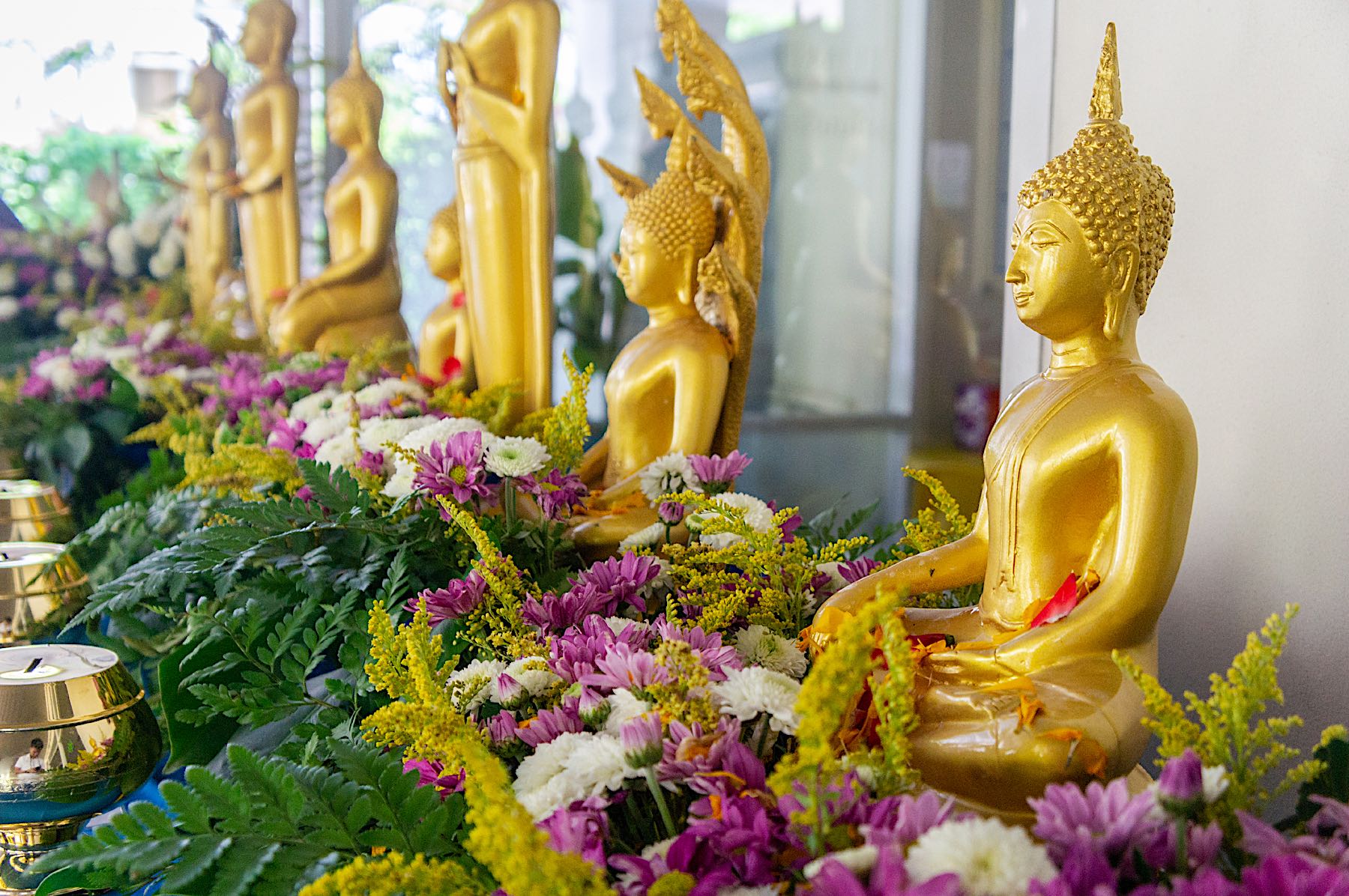
Kindness in general is important (all year round) but especially in the three days of New Year. So, whatever your tradition, please do remember to be kind to all living beings!
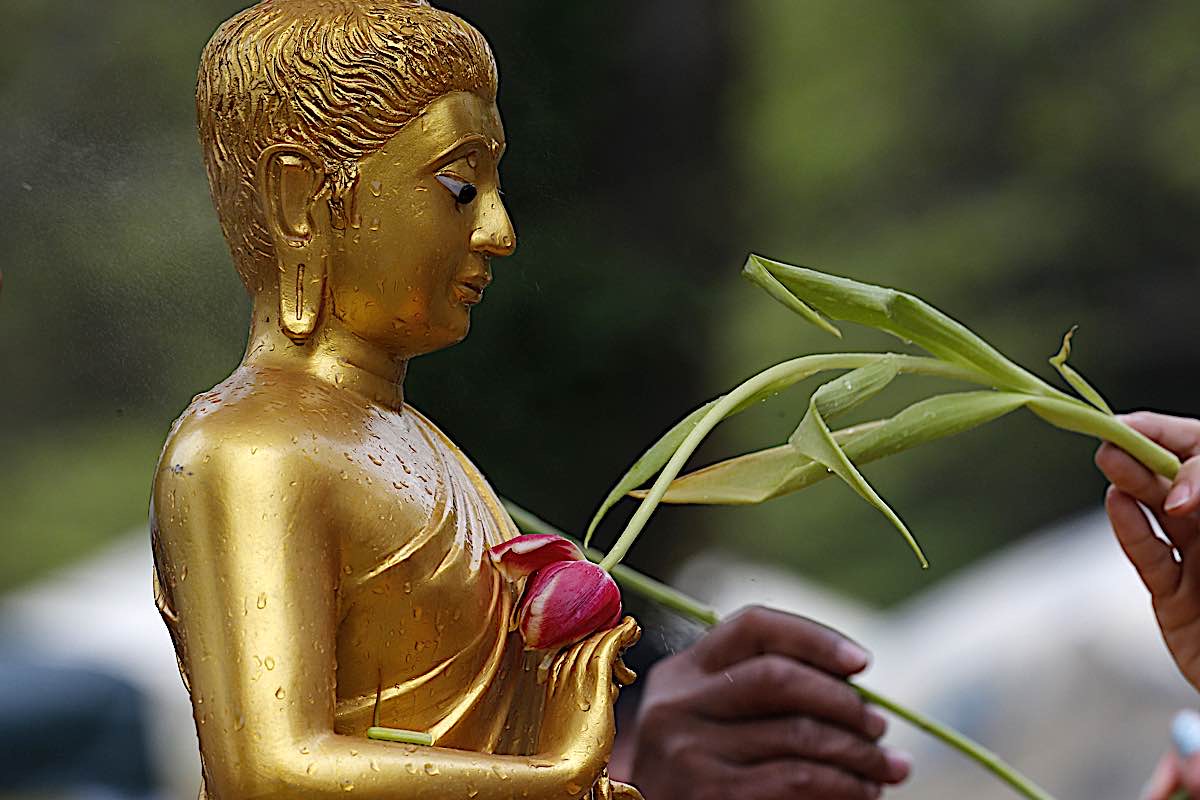
Build Sand Castles
On this day of celebration, we build sand castles and play in the water — in warmer climates! You may perhaps go to the beach or a riverbank where you can construct a sand castle. Consider all of your errors while building your castle, acknowledge them as such, and consider how you might repair or avoid making similar mistakes in the future. As the surf or waves erode away your sand construction, so do your negative karmic activities, and you are reborn as a better person: a better individual.
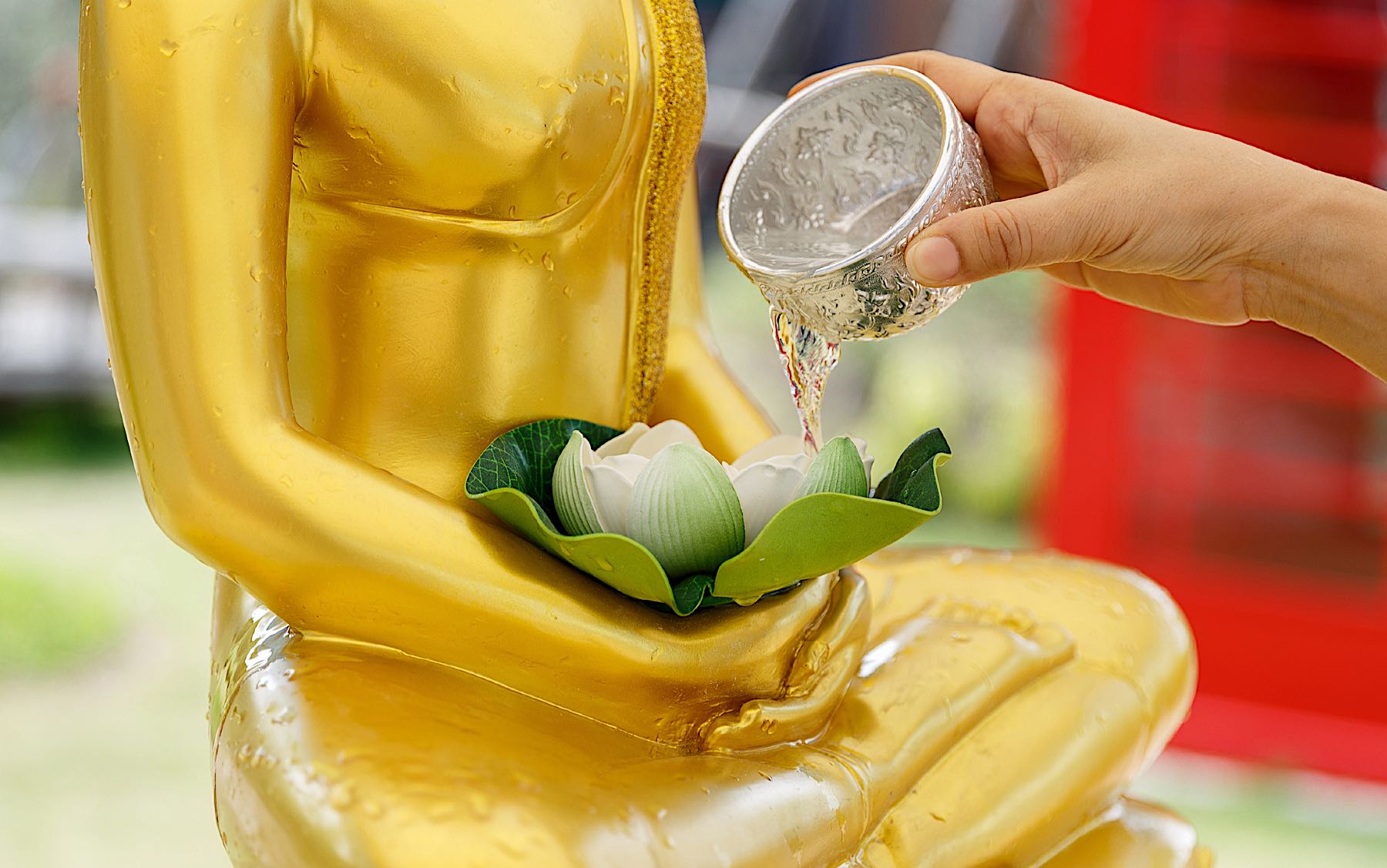
Celebrate on Social Media
Another way you can celebrate Theravadan New Year is to wish all beings a happy, prosperous, kind, and peaceful New Year, including wishes for peace around the world. Perhaps use the hashtag #TheravadaNewYear to help friends find your messages of good will.
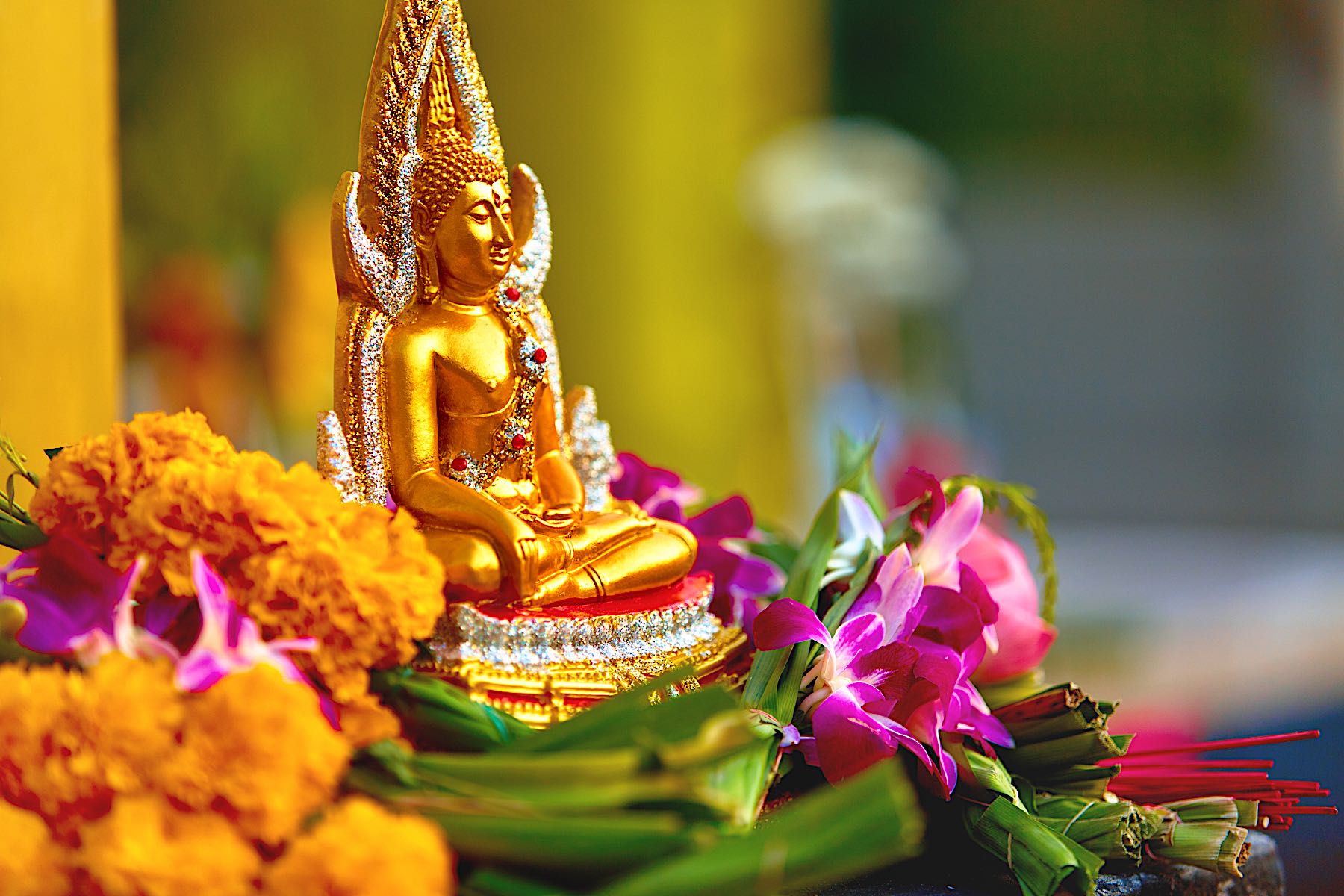
Spread the Dharma
New Year — and all year — is a good time on Social media and elsewhere to Spread the Dharma with the hashtag #SpreadTheDharma
#BuddhaWeekly #Buddhism #BuddhaDharma @BuddhaWeekly
More articles by this author
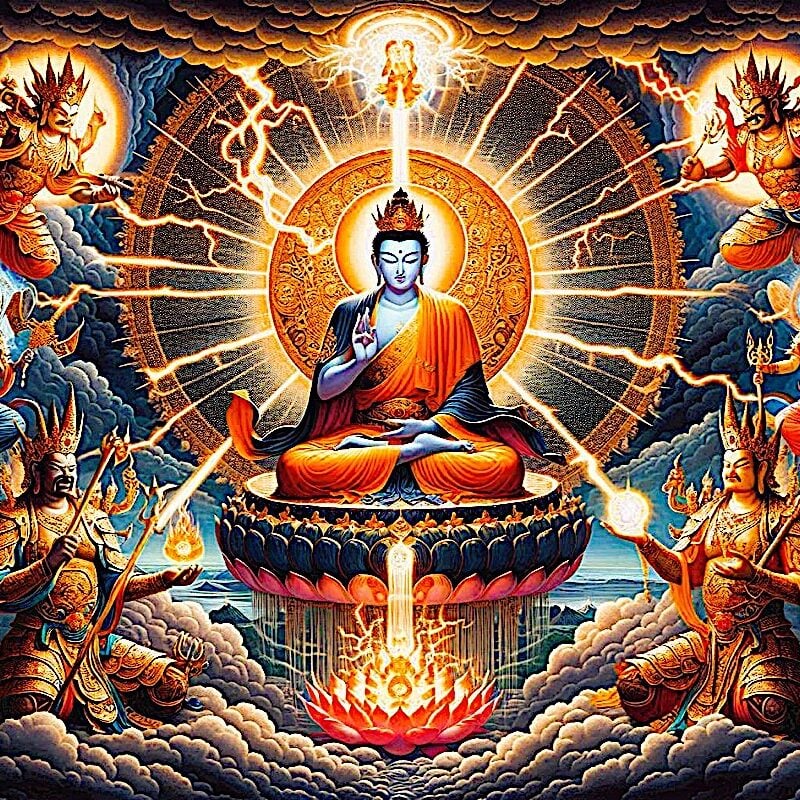
Protection from all Harm, Natural Disaster, Weather, Spirits, Evil, Ghosts, Demons, Obstacles: Golden Light Sutra: Chapter 14

Offering Light for Saga Dawa Duchen and the Month of Merits: Buddha’s Birthday, Enlightenment and Paranirvana 100 Million Merit Day
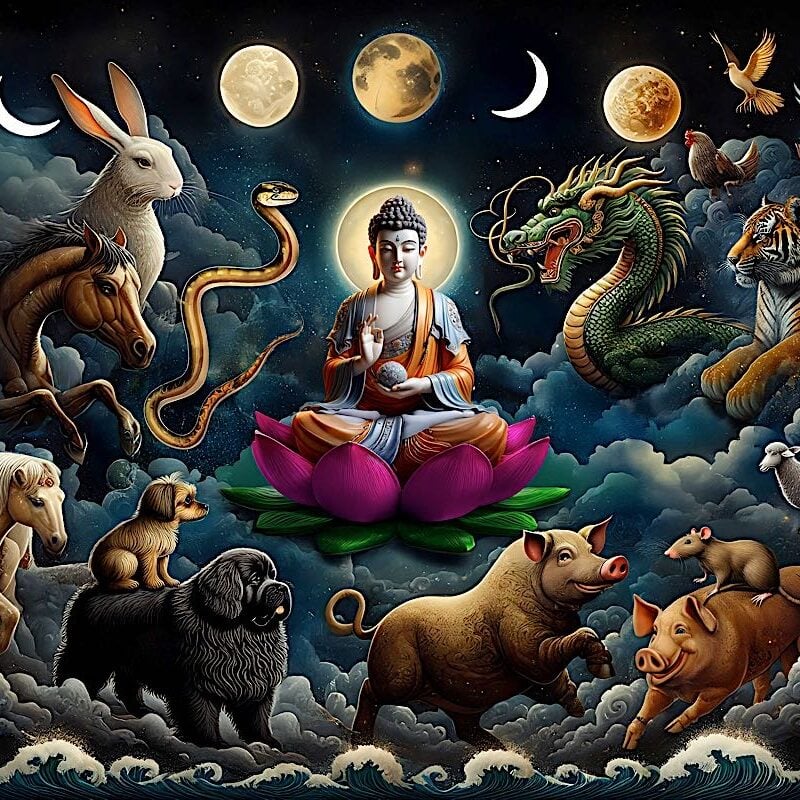
Who is my Enlightened Life Protector Based on Tibetan Animal Sign Zodiac in Buddhism? According to Mewa, Mahayana tradition and Kalachakra-based astrology (with Mantra Videos!)
Search
Latest Features
Please support the "Spread the Dharma" mission as one of our heroic Dharma Supporting Members, or with a one-time donation.
Please Help Support the “Spread the Dharma” Mission!

Be a part of the noble mission as a supporting member or a patron, or a volunteer contributor of content.
The power of Dharma to help sentient beings, in part, lies in ensuring access to Buddha’s precious Dharma — the mission of Buddha Weekly. We can’t do it without you!
A non-profit association since 2007, Buddha Weekly published many feature articles, videos, and, podcasts. Please consider supporting the mission to preserve and “Spread the Dharma." Your support as either a patron or a supporting member helps defray the high costs of producing quality Dharma content. Thank you! Learn more here, or become one of our super karma heroes on Patreon.
Lee Kane
Author | Buddha Weekly
Lee Kane is the editor of Buddha Weekly, since 2007. His main focuses as a writer are mindfulness techniques, meditation, Dharma and Sutra commentaries, Buddhist practices, international perspectives and traditions, Vajrayana, Mahayana, Zen. He also covers various events.
Lee also contributes as a writer to various other online magazines and blogs.






